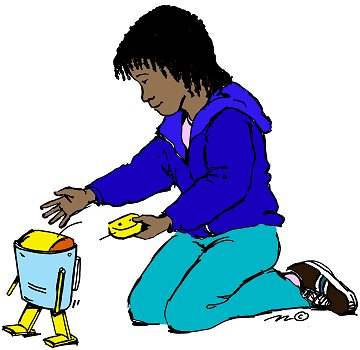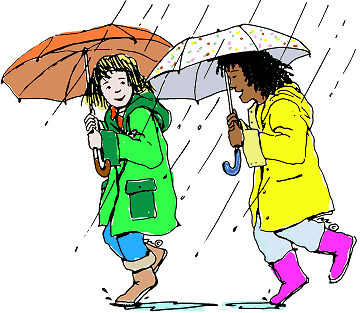Create Your First Pepeke Henua
This is your first video to help you practice basic Pepeke Henua! You will practice using ʻami (determiners such as i and ma, as well as i and iā) in basic Pepeke Henua. You will be able to practice what you have learned about Pepeke Henua and the various ʻami from the following videos, which you should have watched first:
- 0800V Introduction to Pepeke
- 0801V Pepeke Henua “Something is Somewhere”
- 0601V to 0605V explaining basic word types
- 0606V The ʻAmi “i”/”ma” in Pepeke Henua
- 0607V The ʻAmi “i”/”iā” and “me” in Pepeke Henua
You will need a pen and paper for this video, during which you will practice sentences that I give you to write down. You will also have to make up sentences of your own after being given vocabulary words.
Many of the pictures in this video are variations of those presented in the instructional videos, so although they are not exactly the same, I hope that the situations shown in the pictures will remind you of the vocabulary words and structures you learned in the instructional videos up to this point. Have fun!
Video Links
Video Outline
- Making sure you have seen required videos
- Remembering i / ma, me, and i / iā
- “Something is Somewhere” Pepeke Henua
- Practice English to Hawaiian examples
- The meaning of the name Kaimukī.
Length: 24 minutes
Video Stream for Desktop and Mobile
- Please log in to activate the video player.
Video Help
Streaming or Downloading Videos
All videos are now streamed from our providerʻs servers directly to your device, and the correct version for your device will automatically be selected. This means that this video should play on all Macs, Windows PCs, iPads, iPhones, and most Android or similar devices. Most up-to-date web browsers on both desktops and mobile devices should be able to play the files. The only requirement is that you be connected to the internet in order to view the videos.
Note that you may have to wait up to 30 seconds on a medium speed connection for the video to load enough to play.
If you wish to download any of the videos for offline use, please use our Contact Us Form to request download links.
Answers and Analysis of Practice Sentences From The Video
These exercises check your understanding of two very common ways to use Pepeke Henua: (1) to say that something is together with something else; and (2) to say that someone has something specific in his or her possession. The answers for the English sentences we created in the video are below.

Set One
- 1. The pencils are together with the box.
- Aia nā penikala me ka pahu.
- Analysis: Note that it is important to understand that we are using the ʻami “me” to mean “together with” in this instance. We are not saying that the pencils are in the box (for which we would use i or ma meaning “in, on, or at” and say “Aia nā penikala ma ka pahu” or “Aia nā penikala i ka pahu”.
-
Aia nā penikala ma ka pahu
- 2. The box is [together] with the pencils.
- Aia ka pahu me nā penikala.
-
Aia ka pahu me nā penikala
- 3. The pencil is with the boy.
- Aia ka penikala me ke keiki.
- Analysis: Remember that we are being sure to learn the distinction between someone having something and someone being with something, so when we say “The pencil is with the boy” we are simply saying the latter in a very objective sense and not trying to imply ownership.
-
Aia ka penikala me ke keiki.
- 4. The pencil is with Keala.
- Aia ka penikala me Keala.
- Analysis: Here we switch to putting an iʻoa (name) into the ʻawe instead of the kaʻi + memeʻa sequence we used in the previous questions. This means that we do not need to use a kaʻi (like ka, ke, nā, kekahi, and so on) after the ʻami (which is me in this case).
-
Aia ka penikala me Keala
- 5. Keala has the pencil
- Aia ka penikala iā Keala
- Analysis:
Now we move into actually saying that someone has something, but we want to remember that in this case, we are using Pepeke Henua with the ʻami i or iā to point to who has possession of the item at this time. Think of asking someone, “Who has the pencil I put down right here just two minutes ago?!” The response could be “Oh, Keala has it. Keala has the pencil.” (ʻŌ! Aia iā Keala. Aia ka penikala iā Keala.”)
So we are best using this type of pattern with a specific object which someone has, rather than the non-specific “Keala has a pencil” which will use a different pattern that you will learn later on.
-
Aia ka penikala iā Keala.
- 6. Keala is at the house in Honolulu
- Aia ʻo Keala ma ka hale i Honolulu
- Analysis:
We have a new type of piko here: this one uses an iʻoa (name) instead of the kaʻi+memeʻa sequences we have been using above. To indicate that a name is coming up in the piko, we always want to use ʻo. Again, that little ʻo is very important: it tells the listener that a proper name is coming up.
Of course, as usual, you should not use a leading kaʻi when you have an iʻoa at this stage of our learning. (For example, “Aia ke Keala ma ka hale” and “Aia ʻo ke Keala ma ka hale” are both wrong.)
Finally, note that we can use i or ma to indicate in, on, or at in Pepeke Henua, as well as many other places.
-
Aia ʻo Keala ma ka hale i Honolulu.
- 7. Keala has the pencil in the house in Honolulu.
- Aia ka penikala iā Keala ma ka hale i Honolulu.
- Analysis: Combine the use of someone having possession of something specific with your ʻami showing location. We also have multiple ʻawe in this example which is very very common in Hawaiian language; that’s how sentences can become very long indeed. To the listener however, they are very “modular” in the way that they are built in these easily recognizable chunks, each one starting with an ʻami. Take a look at the sentence diagram below to see these “chunks”.
-
Aia ka penikala iā Keala ma ka hale i Honolulu.
- 8. Keala has the blue box in the classroom at school in Kaimukī.
- Aia ka pahu uliuli iā Keala ma ka lumi papa ma ke kula i Kaimukī.
-
Aia ka pahu uliuli iā Keala ma ka lumi papa ma ke kula i Kaimukī.

Set Two
- 1. The pencils are together with the box.
- Aia nā penikala me ka pahu.
- Analysis: Note that it is important to understand that we are using the ʻami “me” to mean “together with” in this instance. We are not saying that the pencils are in the box (for which we would use i or ma meaning “in, on, or at” and say “Aia nā penikala ma ka pahu” or “Aia nā penikala i ka pahu”.
-
Aia nā penikala ma ka pahu
- 2. The box is [together] with the pencils.
- Aia ka pahu me nā penikala.
-
Aia ka pahu me nā penikala
- 3. The pencil is with the boy.
- Aia ka penikala me ke keiki.
- Analysis: Remember that we are being sure to learn the distinction between someone having something and someone being with something, so when we say “The pencil is with the boy” we are simply saying the latter in a very objective sense and not trying to imply ownership.
-
Aia ka penikala me ke keiki.
- 4. The pencil is with Keala.
- Aia ka penikala me Keala.
- Analysis: Here we switch to putting an iʻoa (name) into the ʻawe instead of the kaʻi + memeʻa sequence we used in the previous questions. This means that we do not need to use a kaʻi (like ka, ke, nā, kekahi, and so on) after the ʻami (which is me in this case).
-
Aia ka penikala me Keala
- 5. Keala has the pencil
- Aia ka penikala iā Keala
- Analysis:
Now we move into actually saying that someone has something, but we want to remember that in this case, we are using Pepeke Henua with the ʻami i or iā to point to who has possession of the item at this time. Think of asking someone, “Who has the pencil I put down right here just two minutes ago?!” The response could be “Oh, Keala has it. Keala has the pencil.” (ʻŌ! Aia iā Keala. Aia ka penikala iā Keala.”)
So we are best using this type of pattern with a specific object which someone has, rather than the non-specific “Keala has a pencil” which will use a different pattern that you will learn later on.
-
Aia ka penikala iā Keala.
- 6. Keala is at the house in Honolulu
- Aia ʻo Keala ma ka hale i Honolulu
- Analysis:
We have a new type of piko here: this one uses an iʻoa (name) instead of the kaʻi+memeʻa sequences we have been using above. To indicate that a name is coming up in the piko, we always want to use ʻo. Again, that little ʻo is very important: it tells the listener that a proper name is coming up.
Of course, as usual, you should not use a leading kaʻi when you have an iʻoa at this stage of our learning. (For example, “Aia ke Keala ma ka hale” and “Aia ʻo ke Keala ma ka hale” are both wrong.)
Finally, note that we can use i or ma to indicate in, on, or at in Pepeke Henua, as well as many other places.
-
Aia ʻo Keala ma ka hale i Honolulu.
- 7. Keala has the pencil in the house in Honolulu.
- Aia ka penikala iā Keala ma ka hale i Honolulu.
- Analysis: Combine the use of someone having possession of something specific with your ʻami showing location. We also have multiple ʻawe in this example which is very very common in Hawaiian language; that’s how sentences can become very long indeed. To the listener however, they are very “modular” in the way that they are built in these easily recognizable chunks, each one starting with an ʻami. Take a look at the sentence diagram below to see these “chunks”.
-
Aia ka penikala iā Keala ma ka hale i Honolulu.
- 8. Keala has the blue box in the classroom at school in Kaimukī.
- Aia ka pahu uliuli iā Keala ma ka lumi papa ma ke kula i Kaimukī.
-
Aia ka pahu uliuli iā Keala ma ka lumi papa ma ke kula i Kaimukī.


Set Three
- 1. The pencils are together with the box.
- Aia nā penikala me ka pahu.
- Analysis: Note that it is important to understand that we are using the ʻami “me” to mean “together with” in this instance. We are not saying that the pencils are in the box (for which we would use i or ma meaning “in, on, or at” and say “Aia nā penikala ma ka pahu” or “Aia nā penikala i ka pahu”.
-
Aia nā penikala ma ka pahu
- 2. The box is [together] with the pencils.
- Aia ka pahu me nā penikala.
-
Aia ka pahu me nā penikala
- 3. The pencil is with the boy.
- Aia ka penikala me ke keiki.
- Analysis: Remember that we are being sure to learn the distinction between someone having something and someone being with something, so when we say “The pencil is with the boy” we are simply saying the latter in a very objective sense and not trying to imply ownership.
-
Aia ka penikala me ke keiki.
- 4. The pencil is with Keala.
- Aia ka penikala me Keala.
- Analysis: Here we switch to putting an iʻoa (name) into the ʻawe instead of the kaʻi + memeʻa sequence we used in the previous questions. This means that we do not need to use a kaʻi (like ka, ke, nā, kekahi, and so on) after the ʻami (which is me in this case).
-
Aia ka penikala me Keala
- 5. Keala has the pencil
- Aia ka penikala iā Keala
- Analysis:
Now we move into actually saying that someone has something, but we want to remember that in this case, we are using Pepeke Henua with the ʻami i or iā to point to who has possession of the item at this time. Think of asking someone, “Who has the pencil I put down right here just two minutes ago?!” The response could be “Oh, Keala has it. Keala has the pencil.” (ʻŌ! Aia iā Keala. Aia ka penikala iā Keala.”)
So we are best using this type of pattern with a specific object which someone has, rather than the non-specific “Keala has a pencil” which will use a different pattern that you will learn later on.
-
Aia ka penikala iā Keala.
- 6. Keala is at the house in Honolulu
- Aia ʻo Keala ma ka hale i Honolulu
- Analysis:
We have a new type of piko here: this one uses an iʻoa (name) instead of the kaʻi+memeʻa sequences we have been using above. To indicate that a name is coming up in the piko, we always want to use ʻo. Again, that little ʻo is very important: it tells the listener that a proper name is coming up.
Of course, as usual, you should not use a leading kaʻi when you have an iʻoa at this stage of our learning. (For example, “Aia ke Keala ma ka hale” and “Aia ʻo ke Keala ma ka hale” are both wrong.)
Finally, note that we can use i or ma to indicate in, on, or at in Pepeke Henua, as well as many other places.
-
Aia ʻo Keala ma ka hale i Honolulu.
- 7. Keala has the pencil in the house in Honolulu.
- Aia ka penikala iā Keala ma ka hale i Honolulu.
- Analysis: Combine the use of someone having possession of something specific with your ʻami showing location. We also have multiple ʻawe in this example which is very very common in Hawaiian language; that’s how sentences can become very long indeed. To the listener however, they are very “modular” in the way that they are built in these easily recognizable chunks, each one starting with an ʻami. Take a look at the sentence diagram below to see these “chunks”.
-
Aia ka penikala iā Keala ma ka hale i Honolulu.
- 8. Keala has the blue box in the classroom at school in Kaimukī.
- Aia ka pahu uliuli iā Keala ma ka lumi papa ma ke kula i Kaimukī.
-
Aia ka pahu uliuli iā Keala ma ka lumi papa ma ke kula i Kaimukī.

Set Four
- 1. The pencils are together with the box.
- Aia nā penikala me ka pahu.
- Analysis: Note that it is important to understand that we are using the ʻami “me” to mean “together with” in this instance. We are not saying that the pencils are in the box (for which we would use i or ma meaning “in, on, or at” and say “Aia nā penikala ma ka pahu” or “Aia nā penikala i ka pahu”.
-
Aia nā penikala ma ka pahu
- 2. The box is [together] with the pencils.
- Aia ka pahu me nā penikala.
-
Aia ka pahu me nā penikala
- 3. The pencil is with the boy.
- Aia ka penikala me ke keiki.
- Analysis: Remember that we are being sure to learn the distinction between someone having something and someone being with something, so when we say “The pencil is with the boy” we are simply saying the latter in a very objective sense and not trying to imply ownership.
-
Aia ka penikala me ke keiki.
- 4. The pencil is with Keala.
- Aia ka penikala me Keala.
- Analysis: Here we switch to putting an iʻoa (name) into the ʻawe instead of the kaʻi + memeʻa sequence we used in the previous questions. This means that we do not need to use a kaʻi (like ka, ke, nā, kekahi, and so on) after the ʻami (which is me in this case).
-
Aia ka penikala me Keala
- 5. Keala has the pencil
- Aia ka penikala iā Keala
- Analysis:
Now we move into actually saying that someone has something, but we want to remember that in this case, we are using Pepeke Henua with the ʻami i or iā to point to who has possession of the item at this time. Think of asking someone, “Who has the pencil I put down right here just two minutes ago?!” The response could be “Oh, Keala has it. Keala has the pencil.” (ʻŌ! Aia iā Keala. Aia ka penikala iā Keala.”)
So we are best using this type of pattern with a specific object which someone has, rather than the non-specific “Keala has a pencil” which will use a different pattern that you will learn later on.
-
Aia ka penikala iā Keala.
- 6. Keala is at the house in Honolulu
- Aia ʻo Keala ma ka hale i Honolulu
- Analysis:
We have a new type of piko here: this one uses an iʻoa (name) instead of the kaʻi+memeʻa sequences we have been using above. To indicate that a name is coming up in the piko, we always want to use ʻo. Again, that little ʻo is very important: it tells the listener that a proper name is coming up.
Of course, as usual, you should not use a leading kaʻi when you have an iʻoa at this stage of our learning. (For example, “Aia ke Keala ma ka hale” and “Aia ʻo ke Keala ma ka hale” are both wrong.)
Finally, note that we can use i or ma to indicate in, on, or at in Pepeke Henua, as well as many other places.
-
Aia ʻo Keala ma ka hale i Honolulu.
- 7. Keala has the pencil in the house in Honolulu.
- Aia ka penikala iā Keala ma ka hale i Honolulu.
- Analysis: Combine the use of someone having possession of something specific with your ʻami showing location. We also have multiple ʻawe in this example which is very very common in Hawaiian language; that’s how sentences can become very long indeed. To the listener however, they are very “modular” in the way that they are built in these easily recognizable chunks, each one starting with an ʻami. Take a look at the sentence diagram below to see these “chunks”.
-
Aia ka penikala iā Keala ma ka hale i Honolulu.
- 8. Keala has the blue box in the classroom at school in Kaimukī.
- Aia ka pahu uliuli iā Keala ma ka lumi papa ma ke kula i Kaimukī.
-
Aia ka pahu uliuli iā Keala ma ka lumi papa ma ke kula i Kaimukī.

Set Five
- 1. The pencils are together with the box.
- Aia nā penikala me ka pahu.
- Analysis: Note that it is important to understand that we are using the ʻami “me” to mean “together with” in this instance. We are not saying that the pencils are in the box (for which we would use i or ma meaning “in, on, or at” and say “Aia nā penikala ma ka pahu” or “Aia nā penikala i ka pahu”.
-
Aia nā penikala ma ka pahu
- 2. The box is [together] with the pencils.
- Aia ka pahu me nā penikala.
-
Aia ka pahu me nā penikala
- 3. The pencil is with the boy.
- Aia ka penikala me ke keiki.
- Analysis: Remember that we are being sure to learn the distinction between someone having something and someone being with something, so when we say “The pencil is with the boy” we are simply saying the latter in a very objective sense and not trying to imply ownership.
-
Aia ka penikala me ke keiki.
- 4. The pencil is with Keala.
- Aia ka penikala me Keala.
- Analysis: Here we switch to putting an iʻoa (name) into the ʻawe instead of the kaʻi + memeʻa sequence we used in the previous questions. This means that we do not need to use a kaʻi (like ka, ke, nā, kekahi, and so on) after the ʻami (which is me in this case).
-
Aia ka penikala me Keala
- 5. Keala has the pencil
- Aia ka penikala iā Keala
- Analysis:
Now we move into actually saying that someone has something, but we want to remember that in this case, we are using Pepeke Henua with the ʻami i or iā to point to who has possession of the item at this time. Think of asking someone, “Who has the pencil I put down right here just two minutes ago?!” The response could be “Oh, Keala has it. Keala has the pencil.” (ʻŌ! Aia iā Keala. Aia ka penikala iā Keala.”)
So we are best using this type of pattern with a specific object which someone has, rather than the non-specific “Keala has a pencil” which will use a different pattern that you will learn later on.
-
Aia ka penikala iā Keala.
- 6. Keala is at the house in Honolulu
- Aia ʻo Keala ma ka hale i Honolulu
- Analysis:
We have a new type of piko here: this one uses an iʻoa (name) instead of the kaʻi+memeʻa sequences we have been using above. To indicate that a name is coming up in the piko, we always want to use ʻo. Again, that little ʻo is very important: it tells the listener that a proper name is coming up.
Of course, as usual, you should not use a leading kaʻi when you have an iʻoa at this stage of our learning. (For example, “Aia ke Keala ma ka hale” and “Aia ʻo ke Keala ma ka hale” are both wrong.)
Finally, note that we can use i or ma to indicate in, on, or at in Pepeke Henua, as well as many other places.
-
Aia ʻo Keala ma ka hale i Honolulu.
- 7. Keala has the pencil in the house in Honolulu.
- Aia ka penikala iā Keala ma ka hale i Honolulu.
- Analysis: Combine the use of someone having possession of something specific with your ʻami showing location. We also have multiple ʻawe in this example which is very very common in Hawaiian language; that’s how sentences can become very long indeed. To the listener however, they are very “modular” in the way that they are built in these easily recognizable chunks, each one starting with an ʻami. Take a look at the sentence diagram below to see these “chunks”.
-
Aia ka penikala iā Keala ma ka hale i Honolulu.
- 8. Keala has the blue box in the classroom at school in Kaimukī.
- Aia ka pahu uliuli iā Keala ma ka lumi papa ma ke kula i Kaimukī.
-
Aia ka pahu uliuli iā Keala ma ka lumi papa ma ke kula i Kaimukī.


Set Six
- 1. The pencils are together with the box.
- Aia nā penikala me ka pahu.
- Analysis: Note that it is important to understand that we are using the ʻami “me” to mean “together with” in this instance. We are not saying that the pencils are in the box (for which we would use i or ma meaning “in, on, or at” and say “Aia nā penikala ma ka pahu” or “Aia nā penikala i ka pahu”.
-
Aia nā penikala ma ka pahu
- 2. The box is [together] with the pencils.
- Aia ka pahu me nā penikala.
-
Aia ka pahu me nā penikala
- 3. The pencil is with the boy.
- Aia ka penikala me ke keiki.
- Analysis: Remember that we are being sure to learn the distinction between someone having something and someone being with something, so when we say “The pencil is with the boy” we are simply saying the latter in a very objective sense and not trying to imply ownership.
-
Aia ka penikala me ke keiki.
- 4. The pencil is with Keala.
- Aia ka penikala me Keala.
- Analysis: Here we switch to putting an iʻoa (name) into the ʻawe instead of the kaʻi + memeʻa sequence we used in the previous questions. This means that we do not need to use a kaʻi (like ka, ke, nā, kekahi, and so on) after the ʻami (which is me in this case).
-
Aia ka penikala me Keala
- 5. Keala has the pencil
- Aia ka penikala iā Keala
- Analysis:
Now we move into actually saying that someone has something, but we want to remember that in this case, we are using Pepeke Henua with the ʻami i or iā to point to who has possession of the item at this time. Think of asking someone, “Who has the pencil I put down right here just two minutes ago?!” The response could be “Oh, Keala has it. Keala has the pencil.” (ʻŌ! Aia iā Keala. Aia ka penikala iā Keala.”)
So we are best using this type of pattern with a specific object which someone has, rather than the non-specific “Keala has a pencil” which will use a different pattern that you will learn later on.
-
Aia ka penikala iā Keala.
- 6. Keala is at the house in Honolulu
- Aia ʻo Keala ma ka hale i Honolulu
- Analysis:
We have a new type of piko here: this one uses an iʻoa (name) instead of the kaʻi+memeʻa sequences we have been using above. To indicate that a name is coming up in the piko, we always want to use ʻo. Again, that little ʻo is very important: it tells the listener that a proper name is coming up.
Of course, as usual, you should not use a leading kaʻi when you have an iʻoa at this stage of our learning. (For example, “Aia ke Keala ma ka hale” and “Aia ʻo ke Keala ma ka hale” are both wrong.)
Finally, note that we can use i or ma to indicate in, on, or at in Pepeke Henua, as well as many other places.
-
Aia ʻo Keala ma ka hale i Honolulu.
- 7. Keala has the pencil in the house in Honolulu.
- Aia ka penikala iā Keala ma ka hale i Honolulu.
- Analysis: Combine the use of someone having possession of something specific with your ʻami showing location. We also have multiple ʻawe in this example which is very very common in Hawaiian language; that’s how sentences can become very long indeed. To the listener however, they are very “modular” in the way that they are built in these easily recognizable chunks, each one starting with an ʻami. Take a look at the sentence diagram below to see these “chunks”.
-
Aia ka penikala iā Keala ma ka hale i Honolulu.
- 8. Keala has the blue box in the classroom at school in Kaimukī.
- Aia ka pahu uliuli iā Keala ma ka lumi papa ma ke kula i Kaimukī.
-
Aia ka pahu uliuli iā Keala ma ka lumi papa ma ke kula i Kaimukī.
I hope you have enjoyed this practice lesson and gained some understanding of how Pepeke Henua can work to not only show location in space or time, but also possession of a specific item. Be sure to make up some of your own sentences using my “plug-and-play” methodology of changing only single words or single phrases within the sentences as you go from one to the next, and be sure to say them out loud to yourself and even record yourself saying them!